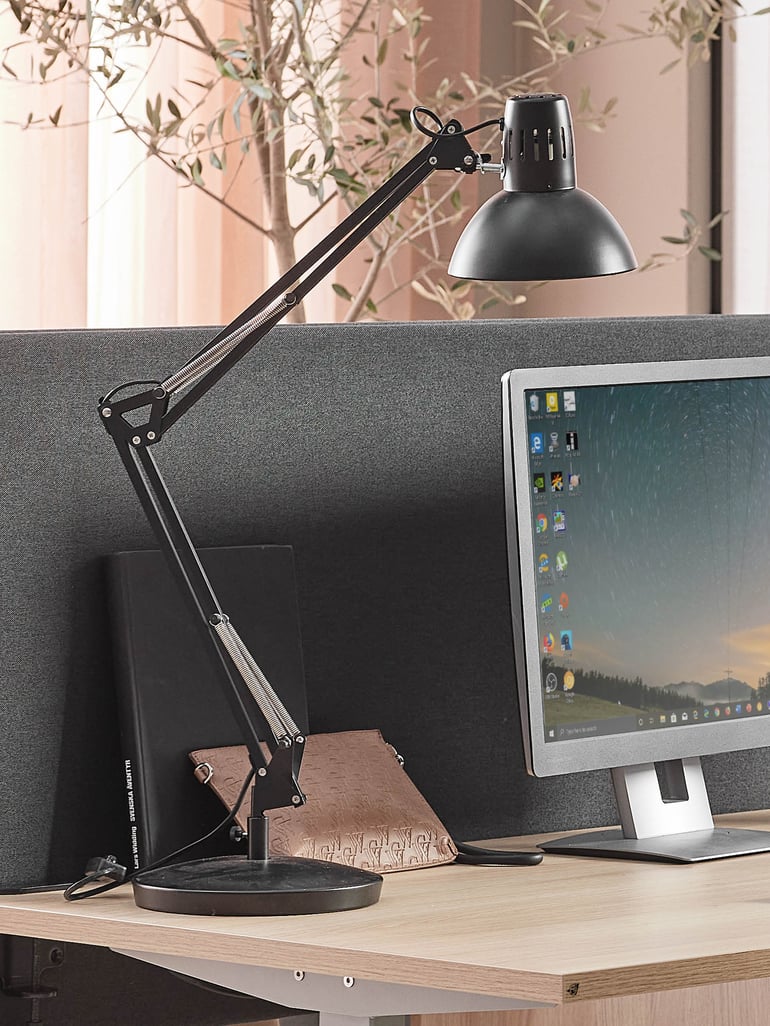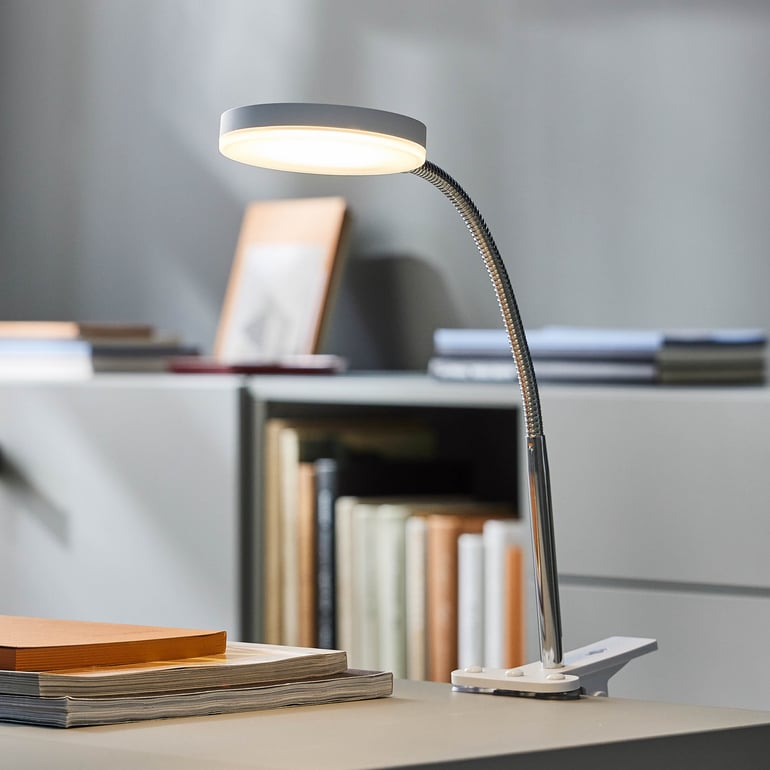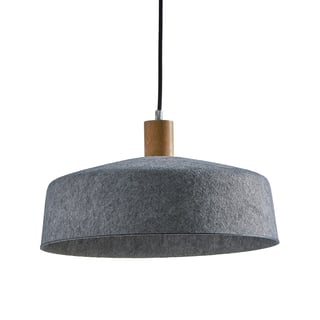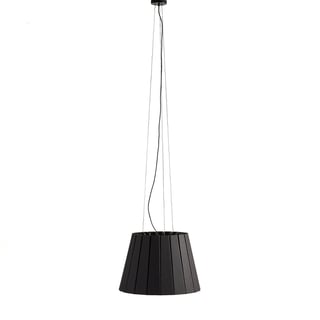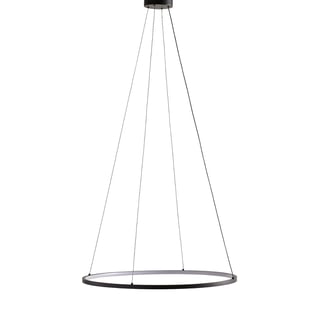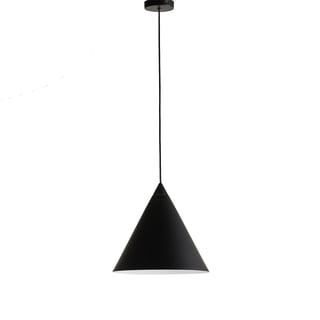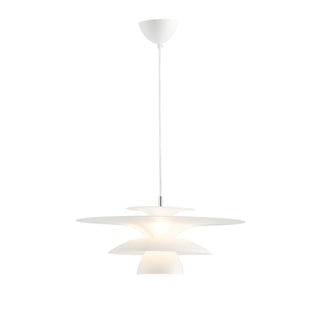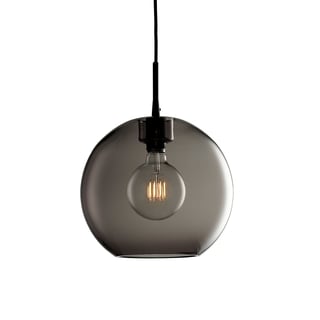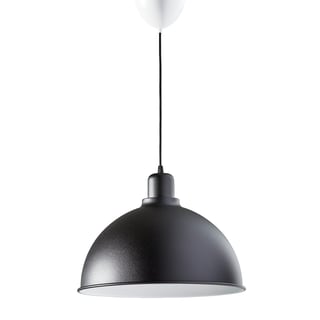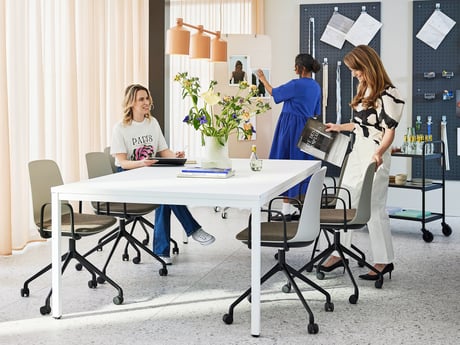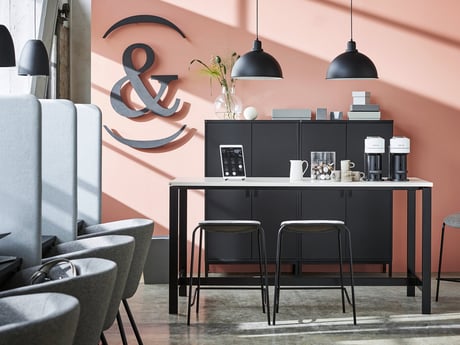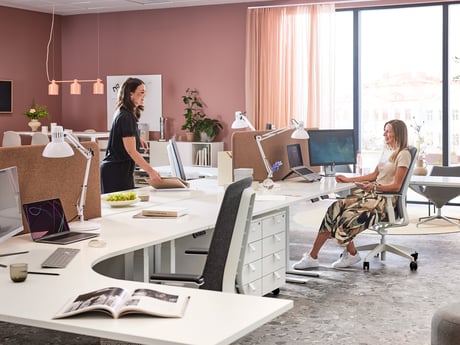- AJ Products UK
- Blog: Tips to Inspire Happiness at Work
- Improving the work environment
- How to Create the Right Lighting to Boost Workplace Wellbeing
How to create the right lighting to boost workplace wellbeing
Did you know that lighting effects our wellbeing? Subjecting your eyes to poor lighting can have a number of physical consequences, including eye strain, headaches and even neck pain, especially if it occurs over a long period of time. With the right lighting you can reduce the health-related problems caused by a poorly lit workstation. A brighter future in the workplace starts with the right lighting.
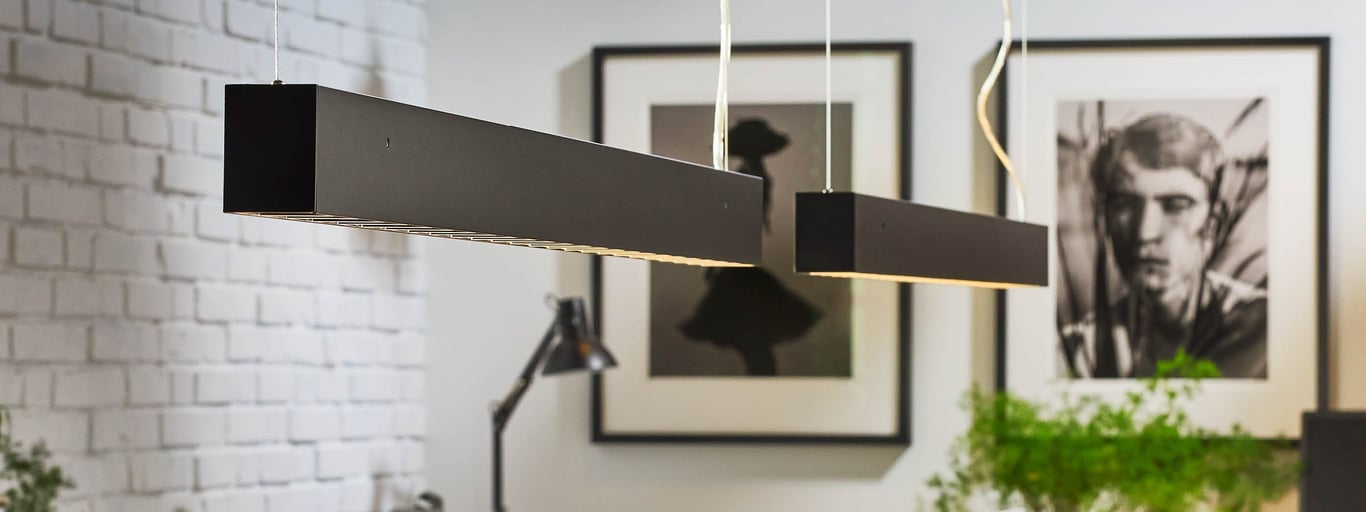
Plan the lighting correctly
Lighting is an important aspect of an ergonomic workplace, but is rarely top of the priority list, perhaps because we simply forget about it. Incorrectly placed or too weak workplace lighting in the office can, over time, lead to disrupted circadian rhythms, tired eyes, tension in the neck and shoulders and reduced concentration.
Good visual ergonomics, however, is an investment in both health and productivity. Research shows that the right lighting can reduce stress, improve well-being and increase performance by up to 20% (Boyce et al., 2003; Veitch & Newsham, 2000).
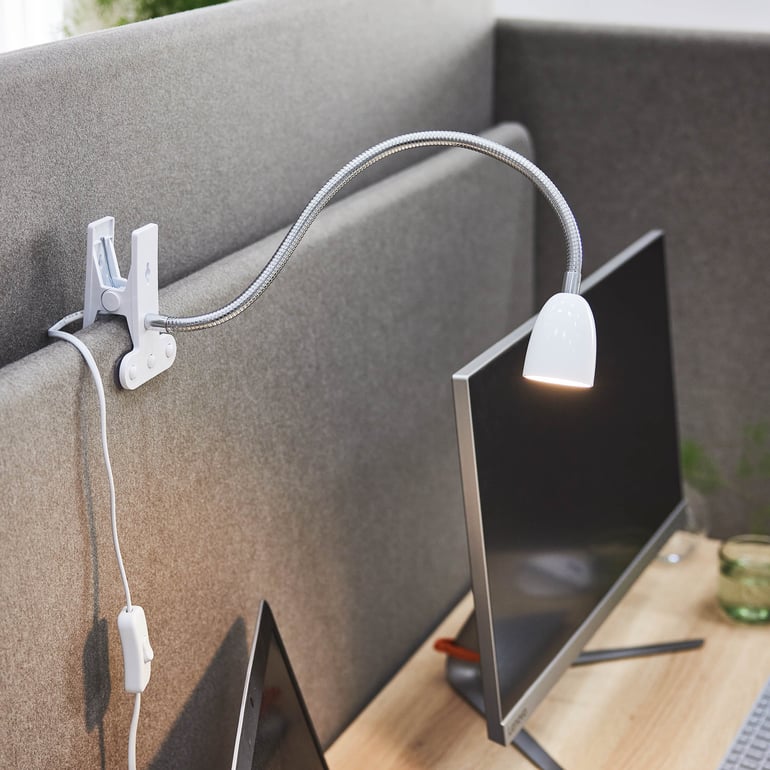
Create an even and flexible lighting
When planning the lighting in the workplace, it is important to have even illumination across all work surfaces and to have the ability to adjust brightness as needed. The ability to vary the lighting levels in the same place is an important part of ergonomic lighting design.
If you have a height-adjustable desk or workbench, the lighting should work just as effectively when you are standing as when you are sitting. It’s also a good idea to supplement ceiling lights with pendant task lighting and an adjustable desk lamp that can be easily adapted to the task at hand and to individual needs.
Avoid sharp contrast
Large differences between light and dark areas can strain the eyes and negatively affect visual ergonomics. Remember that dark surfaces absorb light while lighter ones reflect it. Therefore, rooms with darker décor usually need more light fittings. Combine directional lighting with general lighting to create soft and pleasant contrasts between light and shadow. Aim to minimise the contrast between your immediate work area and the surrounding environment.
Discover our blogs about ergonomics in the workplace
Make the most of natural daylight
Daylight is the best form of light for both health and productivity. Let as much daylight into the office as possible. Just make sure not to blind anyone! Exposure to natural light and a view of the outside world improve both our mental and physical wellbeing.
Light walls and ceilings are a great way to let more daylight into the office, because white reflects more light than colours. However, a lack of colour can leave us lethargic and under-stimulated. Think about adding artwork or using colourful textiles to inspire creativity and improve work performance.
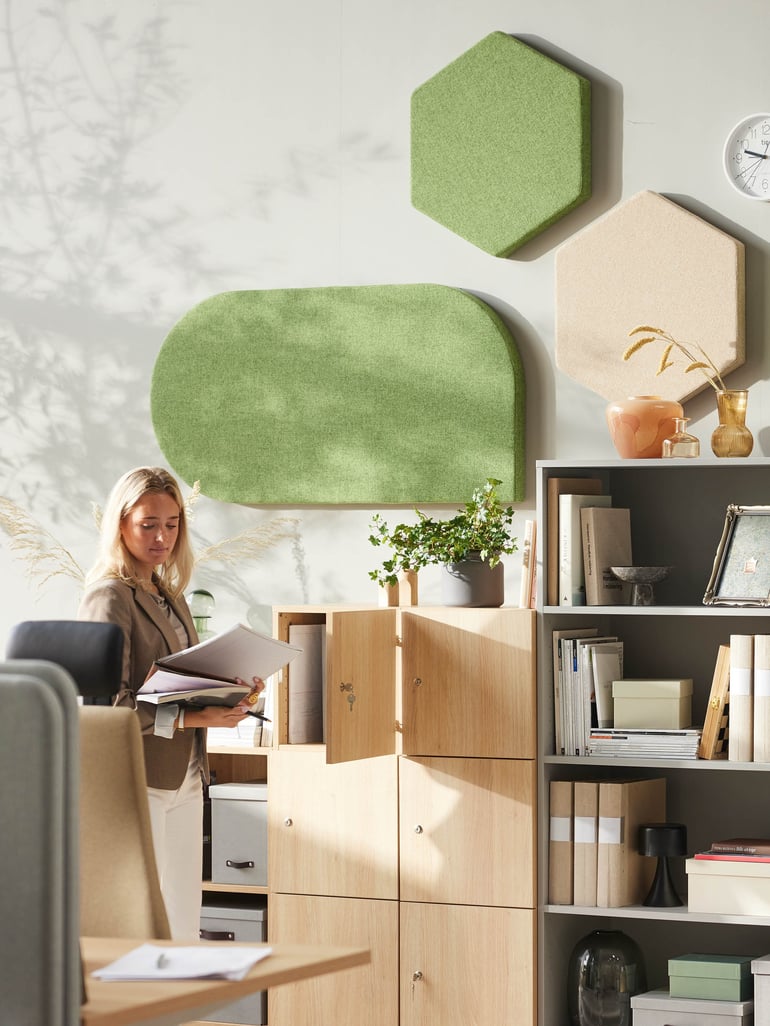
Choose the right colour temperature
The colour of artificial indoor lighting can affect your body’s circadian rhythm and energy levels.
- Cooler, bluish light (above 4,000 Kelvin) is stimulating and ideal for task lighting in offices. It has a refreshing effect, lowering melatonin, the sleep-inducing hormone, and helping you feel more alert and productive.
- Warmer, yellow-tone light (below 3,000 Kelvin) creates a calmer atmosphere, making it better suited to break areas or home environments.
Adjusting the color temperature during the day is a simple form of ergonomic lighting control that supports the body's natural circadian rhythm and improves visual ergonomics, helping you maintain energy and focus.
Don’t underestimate the desk lamp
An adjustable desk lamp is essential for good lighting at your workstation. It provides concentrated, directed light where you need it most and reduces eye strain.
Position your desk lamp to the left if you are right-handed, or to the right if you are left-handed, to prevent shadows falling across your workspace. For the best results, combine the desk lamp with overhead office lighting to achieve even light distribution throughout the room.
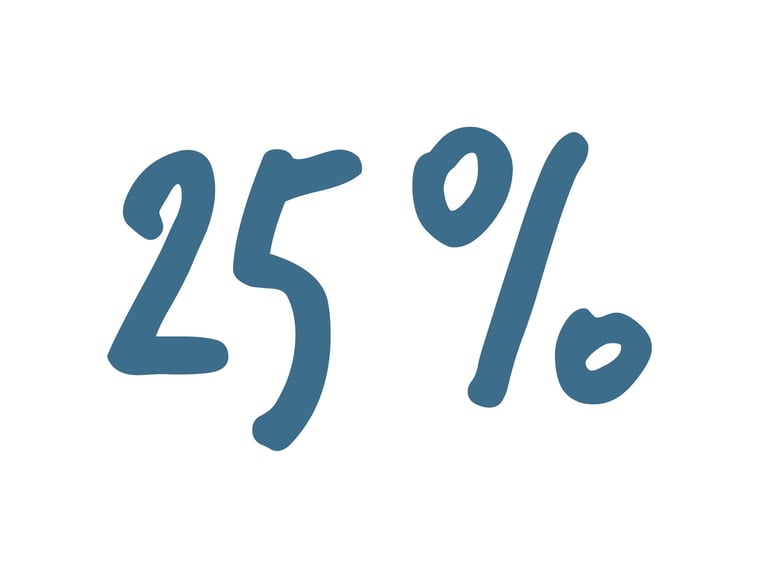
Good lighting in the office can reduce sick leave by up to 25%
Several work environment studies show that the right light levels and color temperatures reduce stress and fatigue, leading to fewer sick days (CIE, 2019; Boyce et al., 2003).
Create an ergonomic lighting environment with our products
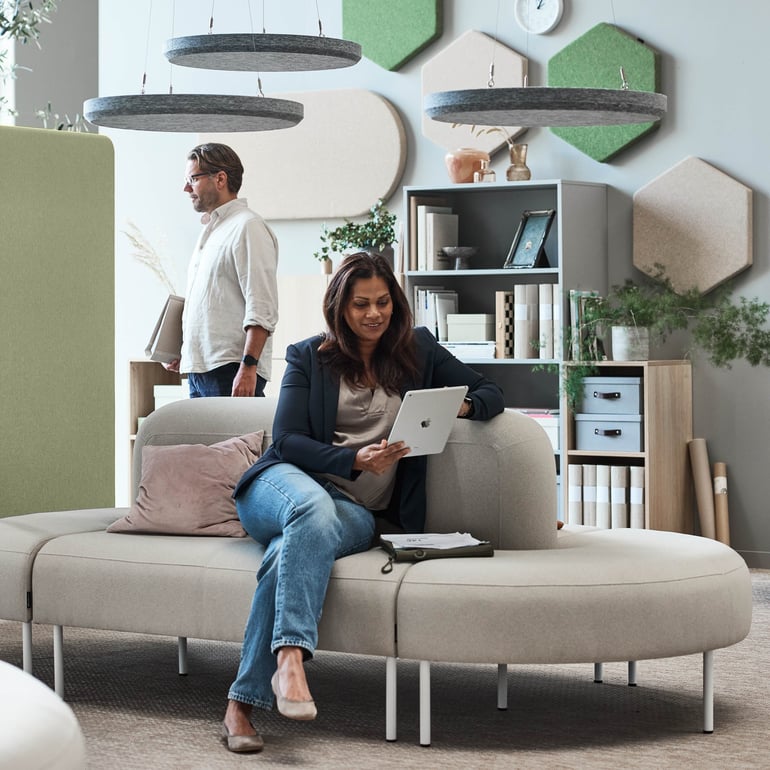
Do you also want to decorate with sound in mind?
A well-balanced acoustic environment makes lighting feel even more comfortable and helps to support focus and peace of mind.
Summary
The right lighting isn't only about seeing clearly, it’s also about feeling well. Good workplace lighting helps reduce fatigue, improve concentration and support a healthier work environment. By planning your lighting around the task, available daylight and individual needs, you can create ergonomic lighting that genuinely makes a difference.
Need help? Ask our experts!
We at AJ Products are always available to help you with solutions suited just for your business. Contact us if you have questions on the choice of fabric, need some inspiration or want to know the alternatives that would best suit your premises. We can then tell you more about your choices.Discover our blogs about ergonomics in the workplace
FAQ
- Lighting affects both health and performance. Too bright, dim or uneven lighting can cause fatigue, headaches and tension in the neck and shoulders. The right lighting, on the other hand, makes it easier to focus and reduces stress levels.
- A combination of general lighting and individual task lighting works best. Hanging office lighting or desk lamps with an adjustable arm allow you to direct the light where it is needed most.
- Ergonomic lighting means that light is adapted to human needs – the right intensity, direction and colour temperature depending on the task and time of day. It should reduce eye strain while supporting the body's natural circadian rhythm.
- Natural light increases alertness, improves mood and can even contribute to better sleep.
- Yes. International studies show that the right light can reduce stress, improve well-being and increase performance by 10-20% (Boyce et al., 2003; Veitch & Newsham, 2000). Good lighting in the office is therefore an investment in both health and productivity.
Get the latest product launches and offers sent direct to your inbox
Do you want to receive exclusive offers, information about new products and inspiration on how you can improve your workplace? Sign up for our free newsletter and be the first to receive our best offers.Please wait...
*By clicking subscribe, I confirm that I have read the privacy policy.







